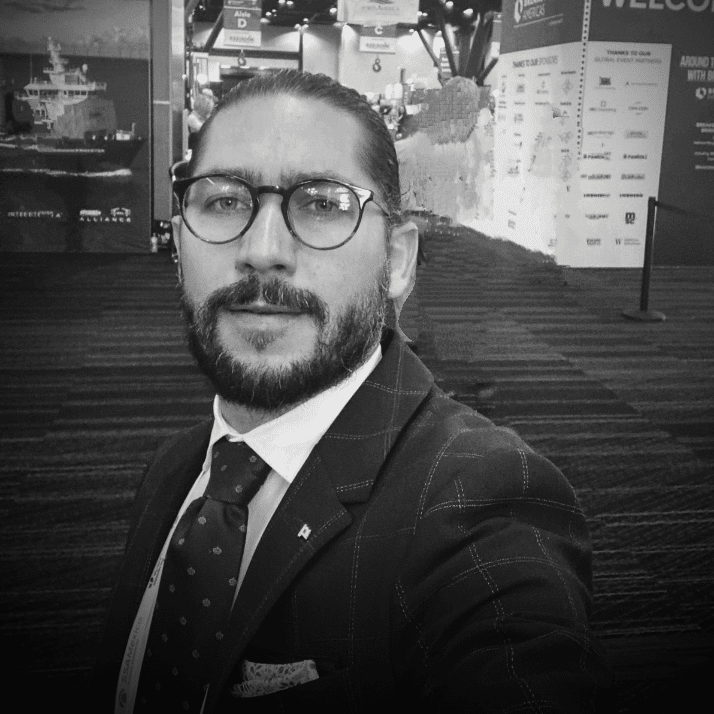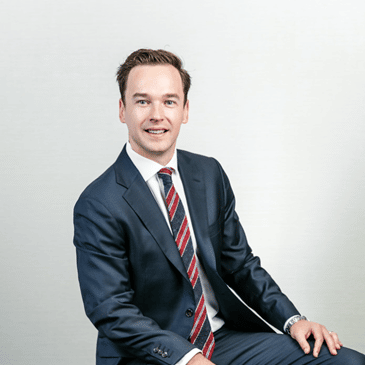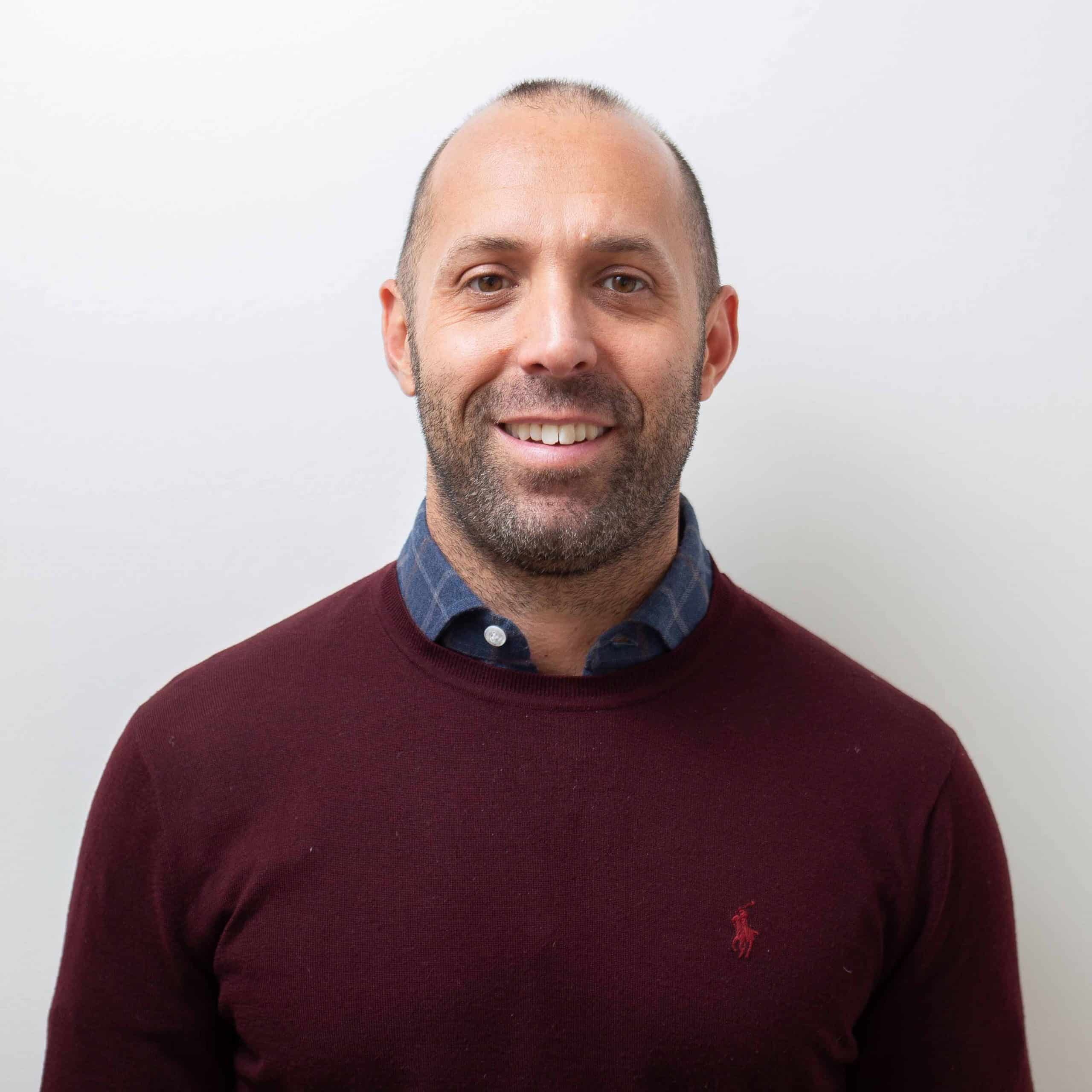This week has seen some interesting developments in the semisub sector as Shell decided to exercise its option on Stena Don in the North Sea but not on Deepsea Bollsta in Namibia. Meanwhile, a new contract for the Transocean Barents will see it operate in the Black Sea, and jackup Shelf Drilling Perseverance will move to Vietnam.
In case you missed it, you can access our previous Rig Market Roundup here.
Contracts
Shelf Drilling has secured a contract award for the 400-ft Shelf Drilling Perseverance jackup rig with PetroVietnam Domestic Exploration Production Operating Company Limited (PVEP POC). The rig will begin mobilisation to Southeast Asia shortly, and the planned start-up of operations with PVEP POC in Vietnam is Q3 2024. The firm term of the contract is approximately 16 months, keeping it busy into Q4 2025. The total estimated contract value for the firm period is approximately $73 million. The rig, previously known as Noble Hans Deul, has been operating in the UK sector of the North Sea for years. However, it has been available and warm stacked in the UK since July 2023, after it was released from its contract with IOG earlier than initially expected. In addition to a reduced semisub supply in the North Sea region due to the departures of several rigs over the past couple of years, the jackup supply in the region is also set to decrease with the upcoming departures of the 400-ft Valaris 247 for a contract to Australia and now the Shelf Drilling Perseverance. The Shelf unit was one of six available in the region, excluding Russia (North), with most of them idle for over a year. As rig supply gets tighter, operators are showing more willingness to pay for mobilisation costs to secure suitable rigs for their campaigns.
Shell has elected not to exercise a remaining six-month option under its contract for 7,500-ft semisubmersible Deepsea Bollsta offshore Namibia, with the rig to become available from June 2024. Owner Northern Ocean stated that it is continuing ongoing dialogue with potential customers in West Africa and harsh environment markets. Deepsea Bollsta is owned by Northern Ocean and currently managed by Odfjell Drilling. The rig began work for Shell offshore Namibia in December 2022, with Shell exercising its first six-month option for the rig in May 2023. Northern Ocean, which also has 10,000-ft Odfjell-managed semisub Deepsea Mira working offshore Namibia for TotalEnergies at this time, stated that it is “confident its rigs are the right solution for this market long-term” but will continue to market its units for opportunities “in all relevant offshore basins.”
Transocean has secured a minimum 540-day contract with OMV Petrom in the Romanian Black Sea for the 10,000-ft semisub Transocean Barents. This comes following initial reports that Seadrill’s 7,874-ft semisub West Phoenix was the low bidder for this OMV tender for work on the Neptun Deep project. However, the tender was revised and has now been awarded to the Transocean Barents. Transocean hinted at a possible new contract award for this semisub unit, as well as for the 12,000-ft drillship Deepwater Skyros, during its Q3 2023 earnings call in late October 2023. The new contract in the Black Sea is at a rate of $465,000 per day, excluding additional services. The programme is expected to begin in the first quarter of 2025 and is estimated to contribute approximately $251 million in backlog, excluding full compensation for mobilisation and a demobilisation fee. For each day over 540 days, including the two option periods, the operating dayrate will be $480,000. OMV Petrom stated that the rig’s mobilisation to the Black Sea is scheduled to commence towards the end of 2024. A total of 10 wells are to be drilled for the Neptun Deep project with work in shallow and deepwater areas. First gas from Neptun Deep is targeted for 2027. Halliburton Energy Service Romania and Newpark Drilling Fluids Eastern Europe will provide integrated drilling services. After working in the North Sea over the last couple of years, Transocean Barents left the region for a contract with TotalEnergies in Lebanon in the summer of 2023 and moved on to Cyprus in October for a well with Eni. It is expected to work with Eni until January 2024 and, after that, TotalEnergies has two remaining options for the rig that could keep it working into mid-2024.
Shell has exercised a six-month option period for Stena Drilling’s 1,640-ft semisub Stena Don for the continuation of operations in the UK sector of the North Sea. Shell hired the rig for a one-year firm contract back in July 2022, and the firm portion of the contract started in May 2023. The contract is for a combination of plugging & abandonment work and development wells. So far, the rig has worked on Gannet, Merganser, and Kingfisher fields. As part of the contract, the operator also secured a one-year priced option for the rig and has now exercised six months, with the other six months still available. The exercised option period is expected to start in May 2024 and keep the rig busy into late 2024, while the remaining option period could keep it busy into May 2025.
Odfjell Drilling has signed an amendment with Aker BP, which extends the firm contract for the 6,560-ft semisub Deepsea Nordkapp in Norway. The extended term will begin on 1 January 2025, in direct continuation of the current firm contract period, and run for a fixed duration of two years. The two additional years are compensated on a market-based rate mechanism. As previously agreed with Aker BP in 2022, the contract value for 2025 has a floor and ceiling dayrate, resulting in a contract value of $124 million to $146 million, where the ceiling of the dayrate range will be adjusted annually based on an inflation formula. The contract value for 2026 is approximately $179 million, which will also be adjusted annually based on an inflation formula. In addition to the market-based dayrates, Aker BP will pay performance and fuel savings incentive bonuses. The contract extension is subject to licence partner approval. In addition to the extended firm duration, the contract now includes rolling one-year unpriced optional periods, the price of which will be based on market rates set in advance of each respective optional year.
Drilling Activity and Discoveries
Thailand-focused oil and gas firm Valeura Energy said on Monday it was planning to mobilise its contracted drilling rig to the Wassana field offshore Thailand. The Wassana field resumed production on 8 December 2023. Production at the Wassana had been shut down since 7July, following an incident in which the floating storage and offloading vessel (FSO) stationed at the field deviated from its intended position and “contacted” the field’s catenary anchor leg mooring (CALM) buoy. Valeura had shut down the Wassana production “to address safety concerns with operating practices on the third-party-owned and operated FSO. In a statement on Monday, Valeura said it would move its contracted drilling rig to the Wassana field to conduct an infill drilling programme comprised of three production-oriented horizontal development wells targeting deeper reservoir intervals within the field. According to Esgian’s database, the rig in question is Borr Drilling’s 350-ft Mist jackup. Sean Guest, President and CEO of Valeura said: “We have a brief window of opportunity in our overall drilling sequence plan to drill three wells at Wassana commencing later this month, which we anticipate will increase production capacity to over 4,000 bbl/d, before re-deploying the rig to our Nong Yao C development early in 2024.” He also said that Valeura was working toward a longer-term redevelopment of the Wassana field, to commercialise the two appraisal discoveries it made in Q3 2023 by adding reserves and expanding the overall capacity of the field. The FID on this is expected in 2024.
Neptune Energy has made a new discovery at the Kyrre prospect and confirmed the volumes for the Ofelia appraisal well, both located in the PL 929 licence, close to the Gjøa field in the Norwegian sector of the North Sea. The licence is operated by Neptune Energy (40%), with partners Wintershall Dea (20%), Pandion Energy (20%), Aker BP (10%), and DNO (10%). Neptune started drilling the Ofelia appraisal well, 35/6-4 ST2, in the Agat formation, in October 2023, using the Odfjell Drilling-managed Deepsea Yantai semisub. The well has been completed and the estimated recoverable volume is in the range of 16-33 million barrels of oil equivalent (mmboe). In addition, the 35/6-4 A sidetrack well was drilled into the overlying Kyrre prospect, resulting in a new gas discovery. Estimated recoverable resources are between 11-19 mmboe of gas, bringing the total recoverable volume from both discoveries to approximately 27-52 mmboe. Located 23 kilometres north of the Neptune-operated Gjøa platform, Ofelia Agat and Kyrre will be considered for development as tie-backs to Gjøa. Neptune will also evaluate if the company’s oil and gas discovery Gjøa Nord (Hamlet), with estimated recoverable volumes between 8-24 mmboe, can be jointly developed. The Deepsea Yantai has now moved on to work for Vår Energi on the Hubert and Magellan (sidetrack) prospects.
Norway’s Petroleum Safety Authority (PSA) has granted Harbour Energy consent for exploration drilling in block 15/9 in the North Sea off Norway. The well 15/9-25, targeting the prospect named Amethyst, is located in production licence 1138, which is operated by Harbour Energy in partnership with Sval Energi and Aker BP. The water depth at the site is 84 meters. Harbour Energy has also already secured a drilling permit for this well. The PSA’s consent includes an option for drilling sidetracks and well testing upon discovery. These operations will be carried out with the CJ70 jackup Noble Integrator, which was hired back in August 2023. The 492-ft rig is currently warm stacked in Stavanger, awaiting the Harbour contract, which will be followed by the Aker BP contract.
Following the Wei-1 and Kawa-1 discoveries, partners CGX Energy and Frontera are concluding the exploration phase on the Corentyne block offshore Guyana and believe around 514 to 628 million BOE of unrisked gross prospective resources are present in the northern portion of the block. The partners are actively pursuing options for a possible farm down as they move into the appraisal phase. The Kawa-1 discovery was made in 2022, followed by Wei-1 in 2023. Both wells were drilled with Noble 10,000-ft semisubmersible Noble Discoverer (previously Maersk Discoverer). CGX Energy is the operator of Corentyne with a 28% interest. Frontera Energy has a 72% interest. Additional appraisal activities will be required before commerciality can be determined. The company has hired Subsea7 / SLB joint venture SIA to complete a conceptual field development plan for the northern portion of Corentyne, including development drilling and an FPSO. A final investment decision is targeted for 2026, with first oil in 2030 if the project goes ahead.
Wintershall Dea’s appraisal well on the Bergknapp discovery confirmed the earlier oil discovery as well as the 6406/3-10A gas discovery in the Norwegian Sea. Wintershall Dea originally discovered oil in the Bergknapp prospect in 2020, followed by a gas discovery in the deeper Åre Formation during a successful re-entry and sidetrack in 2021. After securing a drilling permit in September 2023, Wintershall Dea started drilling the 6406/3-12S well using the 10,000-ft Transocean Norge semisub in production licence 836 S. The licence is located in the Haltenbanken region of the Norwegian Sea, a core area for Wintershall Dea. The appraisal well confirmed the size of the oil discovery. The updated recoverable resource estimate for the oil discovery in the Garn, Ile and Tilje formations is between 44 million and 75 million barrels of oil equivalent, while estimates for the underlying Åre Formation discovery are between 6 and 25 million barrels of oil equivalent. The licensees will now consider connecting both discoveries to existing infrastructure in the area. The Transocean Norge rig, under a long-term contract for Wintershall Dea and OMV, will now move to the nearby Wintershall Dea-operated PL211 CS licence, where it will drill another appraisal well on the Adriana and Sabina discoveries.
Perenco UK has made a near-field discovery on Ravenspurn South (RS) with a new well, C06, proving gas in a previously undrilled fault block downdip of the currently producing RS field in the UK North Sea. This is the third well in Perenco UK’s Southern North Sea (SNS) 2023 drilling campaign using the 400-ft jackup Valaris 247, and follows the successful drilling of Ravenspurn North sidetracks, D15 and D16, producing all together 30 MMscf/d. The new well has found a 90m section of fully gas-bearing Lower Leman Sandstone, Rotliegend Formation, with reservoir properties in line with nearby RS producers. The initial rate, forecast for January 2024, is expected to deliver a Base Case of around 12 MMscf/d (2,000 boepd), bringing 21 Bscf (3.5 Mboe) incremental reserves after 30 years. After completion with the rig, the well will be stimulated with support from the Petrodec ERDA jackup barge. A well test will enable effective monitoring and clean-up before connecting the gas produced from this new well via the Cleeton Hub into Perenco’s Dimlington terminal. Following the completion of its contract with Perenco, Valaris 247 is scheduled for a 60-day out-of-service period for contract preparations across Q1–Q2 2024, after which it is scheduled to work for Inpex in Australia. The operating day rate is $180,000, and Valaris will receive a mobilisation and demobilisation fee that covers operating costs while the rig is in transit.
Australia-based Beach Energy last week confirmed a gas column while drilling a development well at the Kupe gas field, offshore New Zealand. The well, being drilled by the Valaris 107 jackup rig in the Taranaki Basin, will be completed as the field’s fourth producer well, starting to flow in the new year. The progress update was shared this week by Andrew Jefferies, Chief Executive of NZOG, Beach Energy’s partner in the field, who said: “Kupe in South Taranaki, New Zealand, remains a key piece of the country’s energy infrastructure and a gift that keeps giving.” He said that the well would boost Kupe field production and also provide vital insights into opportunities in the field. The development well, referred to as the Kupe South-9 well, is being drilled as part of the Kupe Phase 2 Development Drilling Programme, and is the first Beach-operated well in New Zealand and the first Kupe well since 2009. Beach is 50% owner/operator of the Kupe field. Its partners are Genesis (46%) and New Zealand Oil and Gas (4%).
Demand
Oil India Limited (OIL) is looking for a jackup to work off the East Coast of India in 2025. After cancelling two of its tenders, Oil India is now requesting a budgetary proposal to bidders for a jackup for drilling four wells on the East Coast of India. The approximate duration is 75 days per well, with an estimated commencement of drilling activities by Q1 2025.
Cairn Oil & Gas has launched a tender to contract a jackup for one year plus one to four year options, with an estimated starting date in Q3 2024. Cairn Oil & Gas is seeking one independent leg cantilever jackup rig for drilling exploration and development wells with an estimated commencement date by Q3 2024 in multiple offshore blocks off the East and West Coast of India. This tender follows the Expressions of Interest launched in August 2023. Bids are due by 26 December 2023.
Reliance has launched a tender to contract a drillship for a duration of four wells plus six extension options, starting in 1H 2025. The operator requires one DP class-3 drillship that is capable of operating in water depths of 1,500 to 7,900 ft. (457 to 2,407 m). The scope of work involves a firm duration of four wells with an estimated duration of nine to ten months with six extension options. Option one is for up to two wells with an estimated duration of up to four months, options two to four are for one well with an estimated duration of up to three months, option five is for five wells with an estimated duration of up to three months, and option six is for up to 13 wells with an estimated duration of up to six months. Reliance currently has the Transocean 6th generation drillship Dhirubhai Deepwater KG1 and the contract is expected to end this year. The contract start window under this new tender is between February to June 2025. Bids are due on 1 January 2024.
Shell has reached the Final Investment Decision (FID) for a phased campaign to deliver three wells in the Great White unit in the U.S. Gulf of Mexico. The three wells are designed to boost production at the Shell-operated Perdido spar platform, located about 200 miles south of Galveston, Texas, in about 8,000 feet of water. The drilling campaign is expected to be completed in April 2025. The drilling start-up date was not disclosed. According to Shell, the three wells collectively are expected to produce up to 22,000 barrels of oil equivalent per day (boe/d) at peak rates. Shell is the operator in the Great White unit with 33.34% interest, with Chevron holding 33.33% and BP holding 33.33%. As mentioned, the wells will be developed via the Shell-operated Perdido platform, which started production in 2010. Perdido’s production capacity is 125 kboe/d at peak rates.
Brazilian regulatory agency ANP held public sessions for 4th Cycle of the Permanent Concession Offer (OPC) and the 2nd Cycle of the Permanent Sharing Offer (OPP), awarding exploration blocks offshore Brazil to oil and gas companies. In the 4th cycle of the OPC, 192 exploratory blocks in offshore and onshore areas were awarded with contracts to be signed by 31 May 2024. The winning offers generated R$421,712,292.83 in signing bonuses and will result in at least R$2,012,660,000.00 in investments in the exploration phase of the contracts. In the offshore portions of the round, Chevron secured 15 blocks in the Pelotas Basin. In the Santos Basin, Equinor was the high bidder on S-M-1378, CNOOC on S-M-1482, and Karoon on S-M-1356 and S-M-1482. A consortium of Petrobras with a 70% interest and Shell with a 30% interest was the high bidder on 26 blocks in the Pelotas Basin, while a separate consortium of Petrobras with a 50% interest; CNOOC Petroleum with 20% and Shell with 30% secured three blocks in the Pelotas Basin. In the 2nd cycle of the OPP, four blocks in the Santos Basin and one block in the Campos Basin were offered. The only block to receive an offer was the Tupinambá block (SS-AUP5). BP secured this exploratory block with an offer of R$7,047,000.00 in signing bonuses, and R$360 million in investments to be made in the first exploratory phase for the project. The signing of this contract is expected to take place by 31 May 2024.
Uruguay’s National Administration of Fuels, Alcohol and Portland (ANCAP) has signed new contracts with Shell, APA, and YPF in the ongoing Open Uruguay Round. These agreements supplement existing deals with Challenger Energy in OFF-1 and foresee upcoming partnerships in OFF-4 with APA and Shell, as well as ongoing collaboration in OFF-3 with Challenger Energy. Shell, APA, and YPF have solidified their interest in Uruguay, commencing the exploratory period for the assigned offshore blocks, with new E&P contracts that were approved by the Executive Branch and signed on 12 December 2023 within the framework of the Open Uruguay Round. APA acquired the OFF-6 block, Shell acquired the OFF-2 and OFF-7 blocks, and YPF acquired the OFF-5 block. This is the first time that Uruguay will have all offshore areas under active contracts. In the upcoming weeks, once approved by the Executive Branch, the contract for the OFF-3 area with Challenger Energy will be signed. The oil industry has a renewed interest in exploring Uruguay’s offshore region, spurred by recent discoveries in Namibia.
Eni has signed a Petroleum Sharing Contract (PSC) with Timor-Leste’s Autoridade Nacional do Petroleo for Block P, located offshore Timor-Leste adjacent to the Greater Sunrise field. Under PSC TL-SO-22-23, Eni is to acquire 500 sq km of 3D seismic data and 50 line km of 2D seismic data and process them in the following year. In the third year of this exploration period, Eni has a commitment to drill one exploration well with a minimum depth of 2,500 metres (8,202 ft) and carry out geochemical and geotechnical studies.
Mobilisation/Rig Moves
Vantage Drilling 375-ft jackup Topaz Driller is mobilising to Abidjan, Côte d’Ivoire, ahead of a new contract with Foxtrot International offshore Côte d’Ivoire scheduled to start in January 2024. Topaz Driller recently completed a one-well contract offshore Morocco with Eni. The rig’s upcoming term with Foxtrot was fixed in July 2023 and is for a firm term of 60 days with a 30-day option available. Topaz Driller will next move to Southeast Asia, where it recently secured a two-year term with an undisclosed operator to begin in Q3 2024.
Transocean’s 1,640-ft Cat D semisub Transocean Equinox has left Norway ahead of new contracts in Australia. The rig had been warm stacked and available in Norway since Q4 2022 when it completed its contract with Equinor. It started its journey to Australia after leaving Semco Maritime’s yard in Hanøytangen in late November 2023 onboard Boskalis’ heavy-lift vessel Blue Marlin. The vessel is currently in the English Channel, and its first stop is Setúbal, Portugal, where it’s expected to arrive on 17 December. This is the second Transocean-owned Cat D semisub to leave the North Sea region for Australia following the departure of the 1,640-ft Transocean Endurance in October 2023. Once in Australia, the Transocean Equinox will work on two separate contracts. The first one was secured in May 2023, and it is for five wells and 300 days. It is expected to begin in Q1 2024 and it also provides for a one-well option, potentially keeping the harsh environment semisub busy through Q1 2025. After that, the rig is scheduled to work on a 16-well campaign for a consortium of four operators. The campaign is expected to start in Q1 2025 for an estimated length of 380 days. Options available under this contract could keep the rig working offshore Australia into 2028.
Well-Safe Solutions’ 1,200-ft semisub Well-Safe Defender is expected to move to the Appleton field in the UK North Sea around the end of December 2023. The semisub has been working on a 14-well campaign on the Chestnut and Trees fields for Spirit Energy since April 2023. In addition to this scope, the rig has also recently secured a contract to conduct operations on the Appleton field, adding about one month of work to the backlog. The Appleton field, located 160 miles east of Dundee, was originally discovered in 1997 by Amoco and Amerada Hess. The rig is currently expected to move from the Birch field in block 16/12a to the Appleton 30/11b-4 well location to undertake well P&A on or around 28 December 2023, subject to weather and operational requirements. The work is expected to be finished by the end of January 2024. The unit is also one of two with a multi-year framework agreement with Apache, providing the operator with access to book wells into Well-Safe’s campaigns when required, as well as part of a global master agreement with bp.
Other News
Tanzania’s Minister of Energy has approved the assignment of 74% interest in the Tanga block from Afren Tanzania Ltd. to Octant Energy Tanzania. New operator Octant Energy and its partner Petrodel Resources will now move into a final three-year period on the block and focus on reprocessing a 3D seismic survey acquired in 2013. Petrodel Resources was awarded the Tanga, Latham & Kimbiji licences in 2006 and farmed out an interest to Afren, which was placed into administration in 2015. Petrodel Resources stated that previous interpretations have indicated the likely presence of several >100 million barrel prospects within the Tanga block. The Tanga Block lies in the northernmost coastal region of Tanzania and includes onshore, shallow and deepwater areas. The Kimbiji and Latham licences comprise onshore, near-shore and deepwater areas.
A date has been set for a vote on delisting the offshore drilling firm Northern Drilling from Oslo Børs. John Fredriksen’s Hemen Holding last week launched a mandatory takeover offer for the remaining shares in Northern Drilling, after crossing the 50% threshold of the Norwegian Securities Trading Act section 6-6 in November. Hemen said it planned to delist Northern Drilling upon completion of the offer. Now, a Special General Meeting of the company has been scheduled for 9 January 2024 to consider and approve the delisting of the company’s shares from Oslo Børs. Northern Drilling currently does not own any rigs or assets other than its claims towards the South Korean shipbuilder Hanwha (ex-Daewoo Shipbuilding Marine and Engineering) in relation to previously made and subsequently cancelled rig orders for two drillships.
Neptune Energy and its partners EBN, Tenaz Energy, and ExxonMobil have progressed the L10CCS, a large scale CO2 storage project in the Dutch North Sea, to the Front End Engineering Design (FEED) phase. The project has progressed from the Concept Select phase, which includes various technical and economic assessments, into this next Define/FEED phase. L10CCS seeks to store 5Mton CO2 annually. All partners have signed up to a FEED Cooperation Agreement and Neptune has awarded the Facilities FEED contract to Petrofac, with the contract having kicked off last month. The storage licence application for L10CCS was submitted in Q2 2023 and the project is awaiting award of the licence by the Dutch Ministry of Economic Affairs & Climate Policy. Talks with emitters, looking for a safe place to store their carbon in depleted gas fields under the North Sea, are ongoing and necessary contractual arrangements will be progressed during this project phase. Completion of the technical FEED scopes is anticipated during 2H 2024, with a view to progressing towards a project Final Investment Decision (FID) shortly thereafter in 2025. The timeline of L10CCS is fully aligned with the Aramis project timeline and is planned to be connected and operational as of day one of the opening of this CO2 transport system, now planned in 2028.
Shell has acquired the 20% Working Interest (WI) in the Kaikias field in the U.S. Gulf of Mexico from MOEX, a Mitsui & Co. subsidiary. Shell now has 100% WI and remains the operator. The Kaikias field in the US Gulf of Mexico is a deep-water project that uses a subsea tieback to the nearby Ursa production hub. Shell discovered the Kaikias field in 2014. The field is located in the prolific Mars-Ursa basin, approximately 130 miles from the Louisiana coast. Production began in May 2018.
Australia’s offshore energy regulator NOPSEMA has accepted Inpex’s Bonaparte Basin Exploration Drilling Environment Plan for drilling operations at the G-7-AP greenhouse gas assessment permit area, located in the Bonaparte Basin offshore northern Australia. Inpex is proposing to drill two exploration wells in the permit in the initial exploration drilling campaign, and there is a possibility that up to three additional wells with associated pre-drill site surveys may also be undertaken during the life of the Environment Plan (EP). As a precursor to exploration drilling activities, Inpex will conduct a pre-drill site survey. Drilling and evaluation activities for the initial exploration drilling campaign are expected to last for approximately 150 days for both wells, and the earliest start-up date will be in the first half of 2024. The aim is to assess the suitability of potential reservoirs for future CO2 storage. Drilling will be conducted using either a jack-up or moored semi-submersible mobile offshore drilling unit. The exact location of the proposed pre-drill site surveys and wells in G-7-AP is yet to be finalised; however, they will fall within the boundaries of the proposed project area, a small section of the broader GHG assessment permit where water depths range from approximately 75 metres to 100 metres.
Thai oil and gas firm PTTEP has unveiled its 2024 investment plan and a total budget of around $6.72 billion. Of the total budget, around $4.3 billion is allocated for Capital Expenditure (CAPEX) and around $2.4 billion for Operating Expenditure (OPEX). PTTEP is aiming to maximise production volume from existing assets in Thailand and Malaysia-Thailand Joint Development Area, and other overseas projects to boost Thailand’s energy security. For this, the company has set aside ~$3.2 billion. For exploration activities, PTTEP has allocated $220 million. The funds will be used for geological studies and the drilling of exploration as well as appraisal wells in Thailand, Malaysia, Oman, and the United Arab Emirates. The company is also accelerating key projects’ activities that are in the development phase, such as Lang Lebah field in Malaysia, other development projects in Malaysia, and Mozambique Area 1 Project, to achieve production start-up timelines as planned, with the allocated budget of $762 million for 2024. In 2024, PTTEP plans to invest $109 million in activities aimed at reducing greenhouse gas emissions. The company also unveiled a five-year investment plan of $32.57 billion. For the next five years, PTTEP plans to start gas production from Abu Dhabi Offshore 2 Project in 2025 and gas production from Malaysia SK405B Project in 2027. Also, PTTEP expects to start gas production from Lang Lebah field in Malaysia SK410B Project, Liquefied Natural Gas (LNG) production from Mozambique Area 1 Project and crude oil production from phase 2 of Algeria Hassi Bir Rekaiz project by 2028.
Equinor has entered into an agreement to acquire Shell’s equity in and operatorship of the Linnorm discovery located in the Norwegian Sea. Under this agreement, Equinor will acquire a 30% interest in the PL 255 covering the Linnorm discovery, conditional upon taking over the operatorship from A/S Norske Shell. The partners in the licence are: A/S Norske Shell 30% (operator until the transaction is completed), Petoro 30%, Equinor 20%, and TotalEnergies EP Norge 20%. The move will deepen Equinor’s position in the Halten area, which is in line with its strategy to optimise the NCS portfolio. The Linnorm discovery was proven in 2005 and is the largest undeveloped gas discovery on the NCS. It is estimated to contain around 25-30 billion cubic meters (bcm) of recoverable gas resources. As a comparison, this is more gas than remaining reserves in each of the producing fields Aasta Hansteen, Martin Linge, and Gina Krog. Equinor will continue to evaluate a tie-back for Linnorm to its operated Kristin or Åsgard B installations. Subject to the approval of the Norwegian authorities, the deal is expected to close during the first quarter of 2024. As a reminder, Shell decided in mid-2022 not to continue with its plans to develop Linnorm as a standalone gas field. In October 2023, the company said it was seeking to find viable ways forward for the project, which has now resulted in the agreement with Equinor.
Image credit: Equinor


















































































